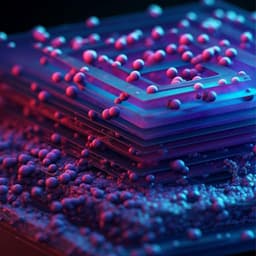
Physics
Bridging the gap between atomically thin semiconductors and metal leads
X. Cai, Z. Wu, et al.
This groundbreaking research by Xiangbin Cai, Zefei Wu, Xu Han, and their colleagues presents a novel approach to achieve nearly barrier-free electrical contacts in atomically thin transition metal dichalcogenide semiconductors. By engineering interfacial bonding distortion, they significantly enhance carrier-injection efficiency, achieving low contact resistance and remarkable mobility, paving the way for advanced TMDSC device design.
Playback language: English
Related Publications
Explore these studies to deepen your understanding of the subject.







